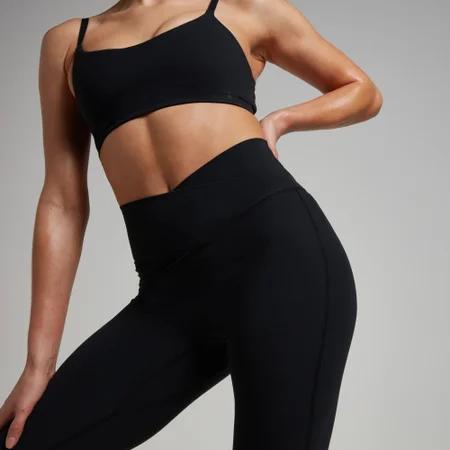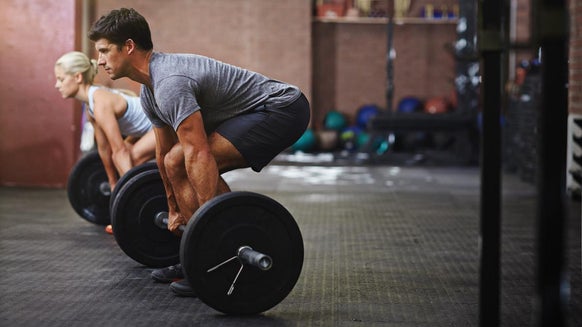Spring into Action: Why Sun Salutations Should Be Your New Morning Ritual

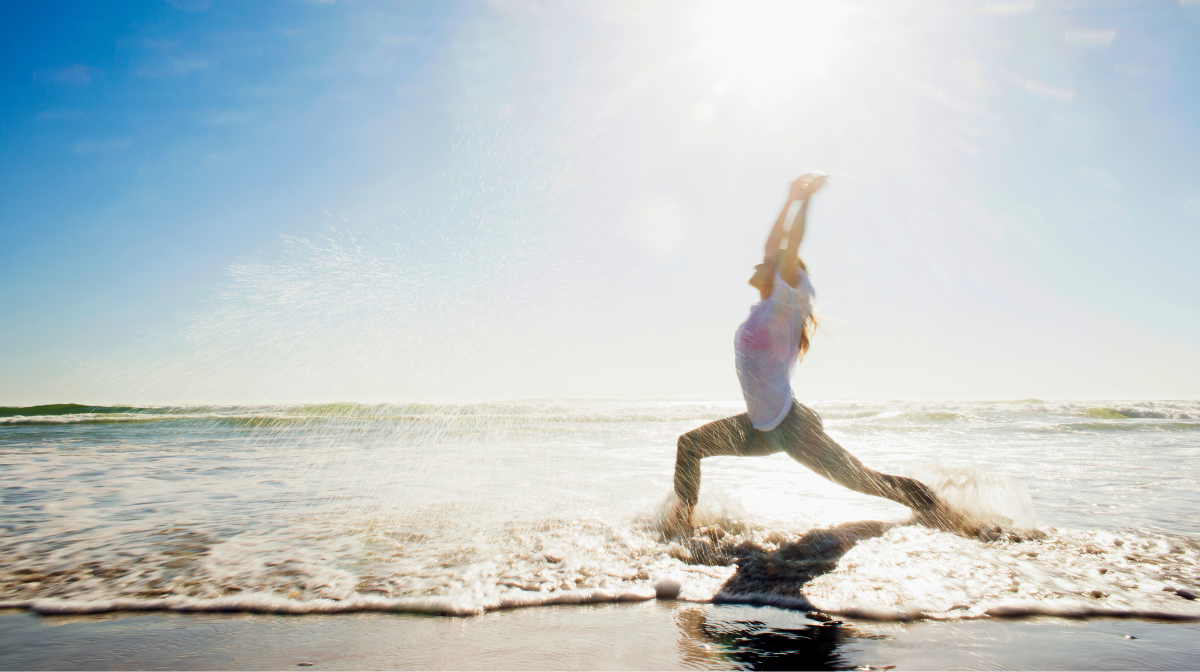
It's the moment we've all been waiting for—spring is upon us once again and the days are getting longer and sunnier. Spring is a time of new beginnings and we have a routine that'll shake off your winter slump and help you embrace the new season.
This well-known ritual is gaining popularity among the wellness community for its invigorating effect, health benefits, and toning capabilities.
We're talking about yoga, specifically, Surya Namaskara, also known as Sun Salutations. This simple but powerful yoga flow can help you stretch, strengthen, and energize—while soaking up all the spring vibes.
Jump to:
- What Are Sun Salutations?
- The Benefits of Sun Salutations
- A Deep Dive into Each Pose
- Why Spring is the Perfect Time to Start
- How to Do a Basic Sun Salutation
- Tips to Make It a Habit
What Are Sun Salutations?
Surya Namaskar or Sun Salutations consists of a common sequence of Hatha yoga asanas. This form of yoga originated in the Maharashtra region of India and is still a common practice there today. Over time, the unique exercise has spread around the world and has gained popularity in the West, with many in Canada now taking part in Sun Salutations.1
You can think of Sun Salutations as yoga’s version of a dynamic warm-up—but with a little more intention and a lot more flow.
This series of poses is traditionally practiced facing the rising sun and was designed to awaken the body and mind. Practicing sun salutations invigorates you while simultaneously having a relaxing effect.
It’s made up of a sequence of postures that flow together with your breath, creating a moving meditation that feels both energizing and grounding.
This yoga style is considered a full-body workout, hitting all major muscle groups in one go.
There are different variations (like Sun Salutation A or B), but even the most basic sequence includes forward folds, lunges, planks, and backbends, providing a well-rounded workout.
The Benefits of Sun Salutations
Surya Namaskar stimulates and conditions virtually every system in the body. There are many benefits to gain from this ancient practice, and luckily, to experience them, you only need to perform the ritual once daily1:
Full-Body Workout: Develops muscle tone and improves flexibility. All the asanas carried out in Surya Namaskar focus on different muscle groups and nerve centres, or "Chakras". This helps you tone almost all body parts while practicing this form of yoga, including arms, abs, thighs, and butt. If you perform Sun Salutations at a fast pace, you'll also gain some cardio in your workout. In addition to toning the muscles, Surya Namaskar benefits the joints, ligaments, and skeletal system by improving posture, flexibility, and balance.1 Boosts Circulation & Energy: The rhythmic movement and deep breathing get your blood flowing while providing conscious relaxation to the body and mind and sharpening your senses. This increases your self-awareness, boosting energy.1 Mood Support: Exercise in general has been shown to boost mood through increasing endorphin production, among other things. The combination of movement, breath, and sunlight that Sun Salutations offers will naturally enhance your mood. Relaxation: Practicing Sun Salutations promotes relaxation and alleviates tension and stress, while still energizing and rejuvenating. It makes an excellent alternative to caffeine and other stimulants and on the contrary, can actually help people fall asleep. With regular practice, Surya Namaskar is an excellent way to manage stress.1 Mindfulness: It is a spiritually uplifting exercise and promotes a keen awareness of the interconnectedness of your body, mind, and breath.1
A Deep Dive into Each Pose
Each pose in the Sun Salutations sequence works specific muscle groups and contributes its own unique fitness and health benefits.1
Poses 1 and 12 support physical balance, activate the respiratory system, and engage muscles in the shoulders, back, and neck.
Poses 2 and 11 help with balance and digestion while working the arms and shoulders, improving spinal tone, and enhancing flexibility in the back and hips.
Poses 3 and 10 boost blood flow, tone the abdominal region, stretch the legs and back, and stimulate both spinal nerves and the lymphatic system.
Poses 4 and 9 target the spine and strengthen the muscles of the hands and wrists.
Poses 5 and 8 encourage better circulation, support heart health, build strength in the arms and wrists, and help release tension in the neck and shoulders.
Pose 6 works the arms and legs, improves shoulder and neck flexibility, stretches the entire back and upper body, and helps release tightness in the shoulders and neck.
Pose 7 increases circulation to abdominal organs, supports the digestive system, stretches the full body, improves spinal flexibility, and stimulates spinal nerves.
Why Spring is the Perfect Time to Start
During spring, it's common to feel reawakened and reenergized after the cold, dark months of winter. Many feel a surge of motivation during the season and a desire to try new things.
If you've been thinking about changing up your workout routine and getting into yoga, spring provides the perfect time to try your hand at Sun Salutations.
This unique yoga style was originally created to honor the sun, making it fitting for spring. Additionally, the warm weather and longer sunlight hours make it an ideal circumstance for trying new forms of exercise that can be done outdoors.
Sun Salutations provide a great opportunity to not only connect with nature and the new life of spring but to also connect with your body and mind.
This yoga style is a low-impact workout—a great choice for getting yourself back into movement after a sedentary winter. The invigorating ritual will set you into motion every morning on a positive note and the warm weather and spring sunshine will only elevate your experience performing Sun Salutations.
How to Do a Basic Sun Salutation
Here’s a breakdown of Sun Salutation A (Surya Namaskar A) to get you started:
Mountain Pose (Tadasana) – Stand tall, ground your feet.
Upward Salute – Inhale, reach your arms to the sky.
Forward Fold – Exhale, fold down over your legs.
Halfway Lift – Inhale, lift your chest, flatten your back.
Plank to Chaturanga – Exhale, step back, and lower down.
Upward-Facing Dog – Inhale, lift chest, open the heart.
Downward-Facing Dog – Exhale, hips to the sky. Stay for a few breaths.
Step or jump forward – Inhale, lift halfway again.
Forward Fold – Exhale deeply.
Upward Salute – Inhale, arms to the sky.
Mountain Pose – Exhale, return to standing.
If you're just starting out, you can repeat this series 3–5 times to warm up or make it your entire morning practice.
Tips to Make It a Habit
If you want to create a habit of performing your Sun Salutations each day, implement the following strategies:
Keep your mat visible: If you see your yoga mat out on a daily basis, it will remind you to do your Sun Salutations. Keep your mat in an easily accessible place where it'll catch your eye. Create positive associations : To motivate yourself to perform Sun Salutations, try pairing your yoga with something else that you enjoy, like morning coffee. If you constantly pair yoga with something else enjoyable, you'll create a positive association, motivating you to continue the practice. Start small: To develop your habit, don't overdo it. It's best to start small and then work your way up once you're accustomed to the practice. Even performing Sun Salutations just once a day allows you to reap the benefits. Try it outdoors: With the sun out, Sun Salutations become significantly more enjoyable as an outdoor activity. Try it outdoors to get your morning sunshine and exercise in.
Take Home Message
Spring is the season of new beginnings—and Sun Salutations are the perfect way to welcome in that energy. Whether you’re easing back into movement or looking for a new wellness ritual to enhance your day-to-day, this mindful flow can bring strength, energy, and calm to your mornings.
So, unroll your mat, face the sun, and get started.
READ THESE NEXT:
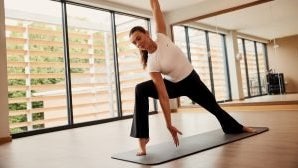
How Yoga Aids Stress Relief | Yoga Relaxation Techniques
And the brand-new Composure line....
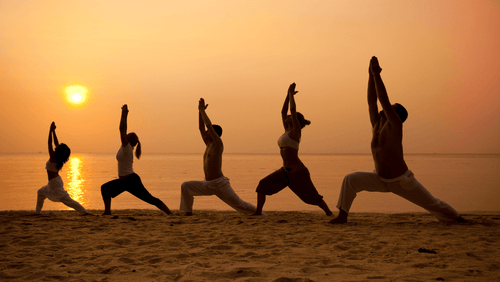
4 Different Yoga Styles & Their Unique Benefits
Strengthen your mind-body connection with these four unique styles of yoga....
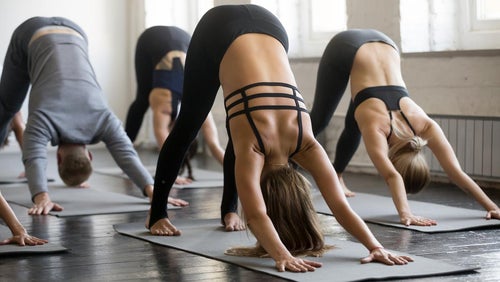
What is Vinyasa Yoga? | An Introduction
Grab your mat and give this a go....
A Rutgers University Honors graduate, Jamie grew up on the Jersey shore and double majored in Comparative Literature and Anthropology in college. Jamie is an experienced writer in the health and wellness, biotech, and eCommerce fields. She loves writing with a purpose and has even written for the Department of Justice.
Jamie became drawn to exercise during her time in university and began to notice the physical and mental benefits of moving your body daily. Today, Jamie enjoys Pilates, light weight training, and going on long walks in nature daily.
Jamie is also passionate about eating right and prioritizing gut health and immunity. She is always trying the next innovation in health and wellness. When she’s not writing articles, Jamie enjoys reading, playing guitar, and finding dogs to play with.
- Sachan, Anurag & Solanki, Geeta. (2021). Surya Namaskar: Its Techniques and Health Benefits. 12. 32393-32396.
